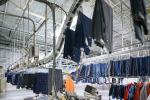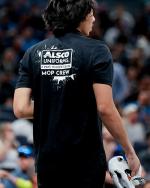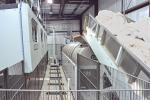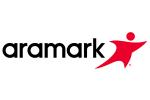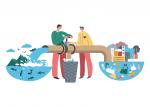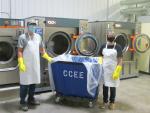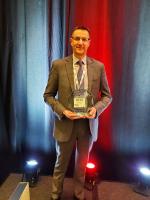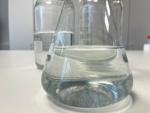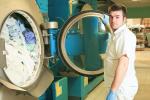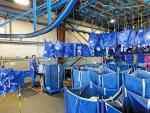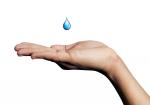Hotel/Motel/Resort Laundry: Rodrigo Patron, Lace House Linen, Petaluma, Calif.

Measuring pounds per operator hour (PPOH) is a crucial task that can help you run a lean and efficient laundry while achieving your production and financial objectives. However, it requires careful planning and execution to get the desired results.
Different plants may have different methods of calculating PPOH. These methods could include counting clean or dirty pounds and incorporating direct or indirect employees in the equation, considering breaks, lunches or equipment breakdowns, among many other factors that can affect the final result.
Therefore, it’s essential to establish clear and realistic goals from the outset and discuss them with your employees and supervisors to ensure everyone is on the same page before starting the task.
It’s important to remember that every plant is unique, and there is no one-size-fits-all approach to measuring PPOH. While you can learn from other plants, it’s crucial to tailor your approach to your plant’s specific needs.
To achieve optimal results and get real value from the exercise, you should develop a guidebook that is specific to your plant. Your guidebook should aim to improve specific metrics for your operation and not just a number that you can throw out when someone asks you what your PPOH is.
Success in measuring PPOH is all about planning ahead and being adaptable.
Although there is no perfect plan, you can set yourself up for success by preparing adequately, leaving room for adjustments as needed and following through. Patience and perseverance will help you reach your PPOH goals.
But to thrive, you must place most of your focus on clearly communicating to your team what it is that you are trying to accomplish during the process, but most importantly, before even beginning the process itself.
Consulting Services: Cliff Beiser, Champions Touch, Kissimmee, Fla.

From my decades of experience managing small, medium and large hospitality laundries, the mandate is to improve PPOH (pounds per operator hour) every year with no exception (sometimes with less staff).
My solution has been to look for ways improve the flow of the laundry. This can be as simple as adding more carts, more tables (conveyor belt) or just reorganizing the starting and ending points.
It can also start with adding a new piece of equipment or reducing wastage to improve compliance to par stock levels. Another key ingredient to increasing PPOH in an existing laundry is through more efficient scheduling.
Yet, the most important overriding element to improve productivity is limiting turnover of employees so they have time to improve and work quicker. This is accomplished through teaching them so well they can teach others. How do we get them to view laundry as a profession and stay with the company?
Let’s take a minute and consider what motivates employees in 2023. The Harvard Business Review found that 66% of the staff are motivated to stay at their current job with the presence of an incentive program.
There are so many books written on this subject that they have named the technique: Gamification.
During the past year I have visited large hospitality laundry plants and have noticed the following in attempting to motivate and retain their employees.
First, they have put together teams and have contests that include PPOH goals for each job function and then an overall plant PPOH. They use a color-coded system such as green for achieving the goal, yellow for just under, and red for being deficient and post these charts on the bulletin board.
Badges, gift cards, special parking places, etc., are awarded.
In a study by Gallup, companies with high employee engagement had 81% less absenteeism, 18% higher productivity and 23% higher profitability. Higher employee engagement has also been shown to increase retention rates by up to 87%.
An additional tool used to increase PPOH is to stagger employee start times are to soften the production backlog between stations (theory of constraints—Lean Six Sigma). Personally, I have even used linear regression taken from the machines’ usage times to pinpoint backlogs that inhibit the flow through the plant or laundry space.
Textile/Uniform Rental: W. Kirby Wagg, Performance Matters, Sarasota, Fla.

Setting goals within companies is what moves the needle to achieve success. The most important part of setting goals is involving your team in the journey.
There must be buy-in from everyone with at least the idea of the goal and it must be reasonable to achieve within a time with the available resources.
You must be ready with “why” you are setting this goal. Is it to reduce labor? Is it environmental? Is it to help open up capacity in the plant? Be specific and optimistic as this will encourage your team to strive for excellence.
Once you have established that your team is (reasonably) on board, you are ready to begin gathering all the resources for success.
How are you calculating your pounds per operator hour (PPOH)? Have you consulted with your chemical vendor on the soiled pounds processed or is your plant weighing all the products?
You must establish a baseline with which to work. There are many ways to compare your results.
Most plants just include all the direct labor associated with processing the linen, uniforms and mats from the soil room to the wash floor to the dryers to the finishing department to the pack out. Supervisors and route reps are not normally included in the calculations.
Will you be allowing for seasonal changes in your business? It’s important to compare your business over the course of one year to get a fair assessment.
To help your employees and the company achieve a higher PPOH, engage all your vendors in the process. Your chemical company can adjust formula times, amount of water, and chemicals, which will result in possibly shorter wash cycles.
Your textile companies can assist with alternative products that may require less processing costs, and your equipment vendors can help with optimizing the washers, dryers, tunnels, boilers and ironers so they operate to maximum efficiency.
Lean on your contacts in the industry: TRSA, Association for Linen Management (ALM), CSCNetwork are all associations that have great resources.
If you are looking for something specific, it is more than likely there will be a white paper on the subject. Discuss with your colleagues in the industry. If you are a member of a peer group, there will be someone that has gone through the journey and can offer great insights.
If you are offering an incentive to your team, communicate with them on the progress each day. Cash awards and prizes are all nice gestures but are not usually needed.
What your employees want more than anything (days off, more money) is a boss they can trust.
If you really listen to your team as individuals, learn what their dreams are, and help them achieve those dreams, you will reach your PPOH goal and whatever else you want your company to be.
Check back tomorrow for insights from healthcare laundry and uniform/workwear manufacturing experts.
Have a question or comment? E-mail our editor Matt Poe at [email protected].





